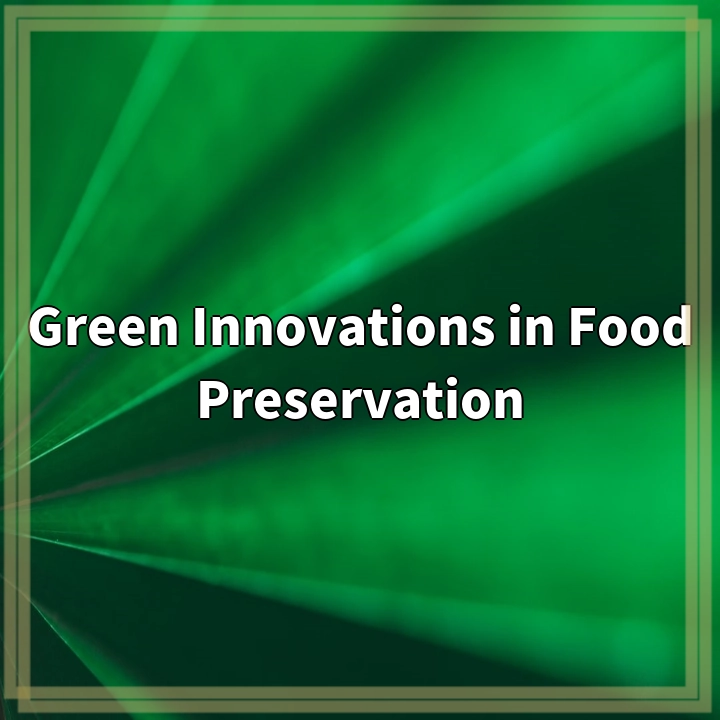
What is Green Innovations in Food Preservation?
Green innovations in food preservation encompass sustainable methods and technologies used to extend the shelf life of food while minimizing the impact on the environment. As the global population grows and the demand for food increases, it is crucial to find eco-friendly solutions that reduce food waste, carbon emissions, and resource consumption.
Real-World Problems in Food Preservation
Despite the advances in food preservation techniques, several challenges persist in the food industry. These challenges include:
1. Energy Consumption:
Traditional food preservation methods often rely on high energy consumption, such as refrigeration and freezing. This leads to increased greenhouse gas emissions and contributes to climate change.
2. Chemical Usage:
Many conventional food preservatives contain synthetic chemicals that can have negative health and environmental impacts. These chemicals may contaminate food, water sources, and soil when not properly disposed of or when overused.
3. Food Waste:
Approximately one-third of all food produced for human consumption is lost or wasted. Improper storage and preservation methods are major contributors to food waste, resulting in significant economic losses and unnecessary resource depletion.
4. Packaging Waste:
Traditional food preservation often involves excessive packaging to maintain freshness and prevent spoilage. This leads to significant amounts of plastic and other packaging materials that end up in landfills or pollute oceans and natural habitats.
Addressing the Real-World Problems
Green innovations in food preservation aim to address these challenges by adopting sustainable methods that minimize the environmental impact. These solutions include:
1. Natural Preservatives:
Research is being conducted to identify and utilize natural food preservatives, such as plant extracts, essential oils, and antimicrobial compounds, which are safer for human consumption and biodegradable.
2. Innovative Technologies:
Advancements in technology have allowed the development of energy-efficient food preservation techniques, such as vacuum packaging, modified atmosphere packaging, and high-pressure processing, which help prolong shelf life and reduce energy consumption.
3. Smart Packaging:
Smart and sustainable packaging solutions, including biodegradable materials, edible films, and active packaging technologies, are being explored to minimize packaging waste and extend the freshness of food without compromising safety.
4. Cold Chain Optimization:
Improving the efficiency of the cold chain system, which involves the transportation and storage of perishable goods under controlled temperatures, can reduce energy consumption and minimize food loss along the supply chain.

Summary: Solutions for Green Innovations in Food Preservation
Green innovations in food preservation offer sustainable solutions to address the challenges faced in the current food industry. Here are some key solutions:
1. Natural Preservatives:
Research is focused on identifying and utilizing natural food preservatives such as plant extracts, essential oils, and antimicrobial compounds. These alternatives are safer for human consumption and biodegradable.
2. Innovative Technologies:
Advancements in technology have led to the development of energy-efficient food preservation techniques. Vacuum packaging, modified atmosphere packaging, and high-pressure processing are some examples that help reduce energy consumption while extending the shelf life of food.
3. Smart Packaging:
Sustainable packaging solutions such as biodegradable materials, edible films, and active packaging technologies help minimize packaging waste and maintain food freshness without compromising safety.
4. Cold Chain Optimization:
Improving the efficiency of the cold chain system, which involves the transportation and storage of perishable goods under controlled temperatures, can reduce energy consumption and minimize food loss throughout the supply chain.















